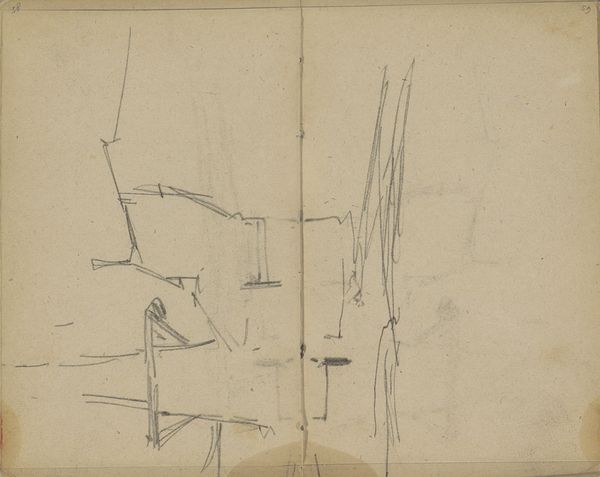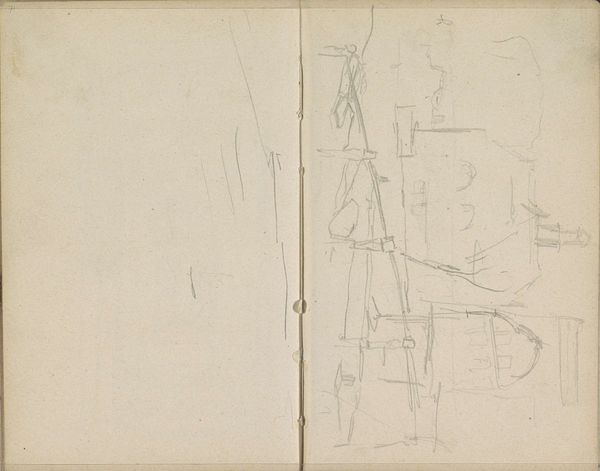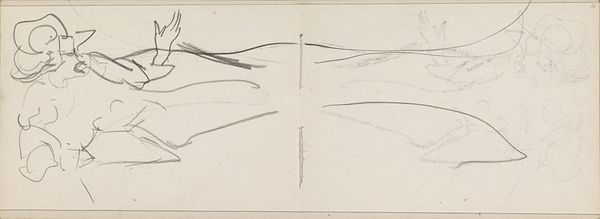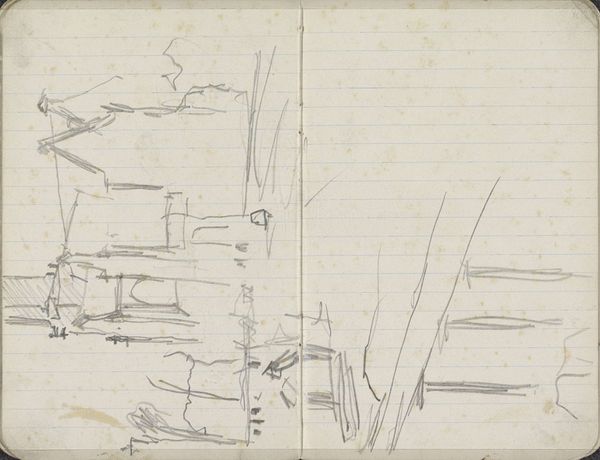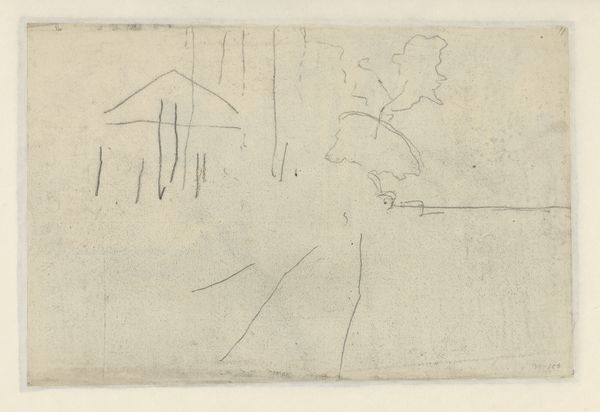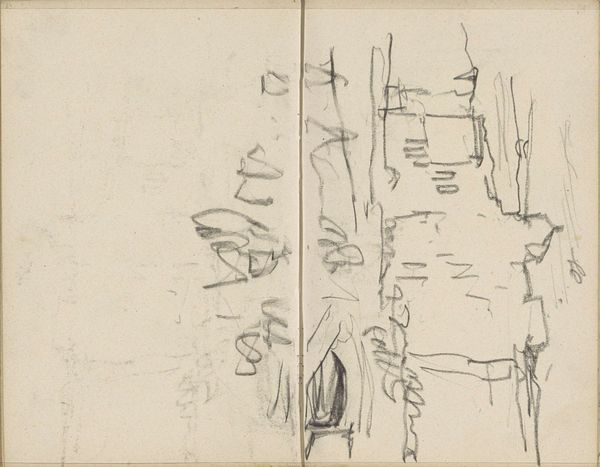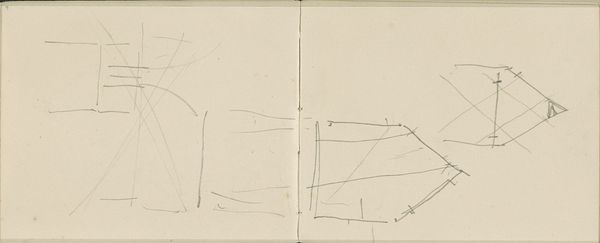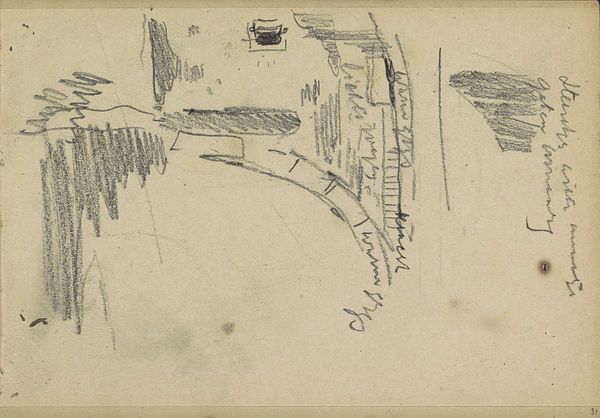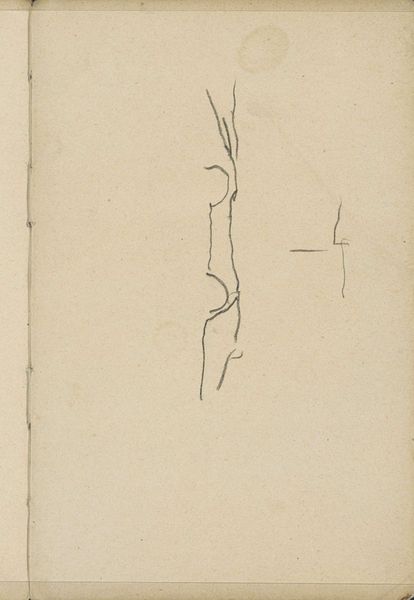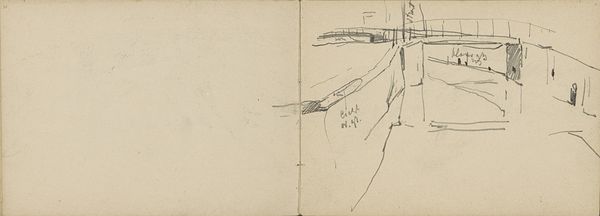
drawing, paper, graphite
#
drawing
#
impressionism
#
sketch book
#
landscape
#
paper
#
graphite
#
cityscape
Copyright: Rijks Museum: Open Domain
Editor: This is George Hendrik Breitner's "Studie, mogelijk van gebouwen langs het water," or "Study, possibly of buildings along the water," created sometime between 1881 and 1883. It’s a graphite drawing on paper. It looks so fleeting, almost like a memory fading at the edges. What stands out to you about it? Curator: Immediately, the rough quality of the graphite strokes speaks to the transient nature of urban life. Breitner is known for capturing Amsterdam, and the suggestion of buildings mirrored in water conjures up centuries of trade, reflection, and a certain stoicism inherent in Dutch cityscapes. Do you see how the cross-hatching lends weight to certain forms, almost anchoring them against the more ethereal, sketched areas? Editor: Yes, that contrast between the defined and undefined areas is really interesting! Is he maybe using those techniques to emphasize the permanent versus the temporary? Curator: Precisely! And consider the gaze required to even see those rough shapes as “buildings.” It speaks to cultural memory, of shared understandings passed down about what constitutes ‘home,’ ‘commerce,’ ‘stability’. What narratives do you think people would weave around such structures in Breitner's Amsterdam? Editor: Thinking about Amsterdam at that time, there was probably so much rapid change, maybe people would focus on anything that looked familiar. It’s funny that a sketch could bring out so much. Curator: Exactly. Breitner seems to capture that human need to find solidity amidst constant change. Editor: That makes me appreciate this sketch even more! It’s much deeper than just a quick drawing. Curator: Indeed. Visual fragments can reveal a much larger cultural picture when we look closely at the symbolic vocabulary.
Comments
No comments
Be the first to comment and join the conversation on the ultimate creative platform.

